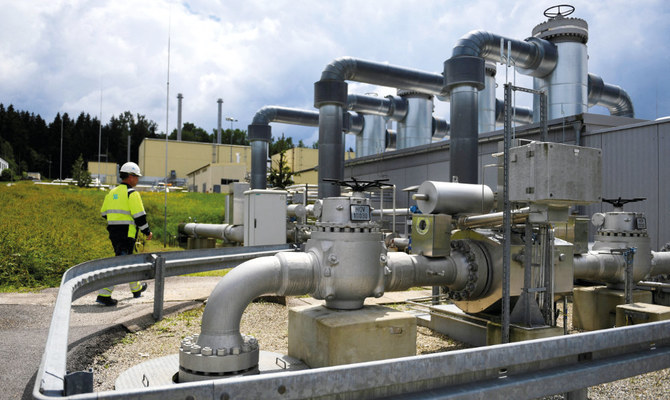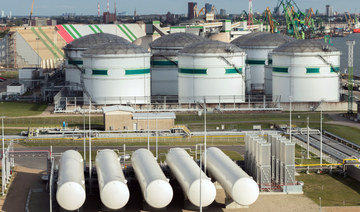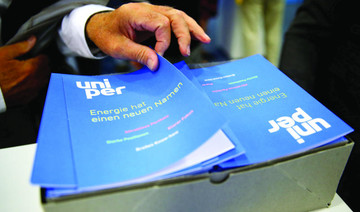BERLIN: A dispute between Germany and Finland over the cost of rescuing gas importer Uniper flared on Saturday as its Finnish main shareholder rejected a call from a senior German minister for further help in bailing out the ailing company.
Uniper, Germany’s biggest importer and storer of gas, this week asked for a German government bailout, warning losses due to reduced supplies from Russia and soaring gas prices could reach €10 billion ($10 billion) this year.
But German Economy Minister Robert Habeck said Uniper’s main shareholder, Finnish state energy company Fortum, should contribute to the rescue, as Germany confronts an energy crisis serious enough for Habeck to call for economy measures such as Germans taking shorter showers.
“It (Uniper) belongs to someone, someone who is solvent and can provide support,” Habeck, who is also energy minister, told Deutschlandfunk radio in an interview. “So it’s right to consider models where the owners also bear an obligation.”
Fortum, which has proposed ringfencing Uniper’s German businesses under government ownership, responded that it had already given Uniper €8 billion in loans and guarantees.
“The German security of supply businesses need to be owned by the federal state that has the required strong creditworthiness,” since gas prices might continue to rise, said Fortum Chief Executive Markus Rauram in an emailed statement.
For Finland, its economy a 13th the size of Germany’s and with a 15th the population, the challenge is serious.
“The rescue of Uniper is an issue of European importance.” said Finnish Europe Minister Tytti Tuppurainen, also in an email. “We are urgently calling for Uniper’s at-risk, system-critical businesses to be ringfenced in Germany and secured by the state.”
After prospering from years of dependable flows of cheap Russian gas, Germany is scrambling to contain the impact of those supplies being constrained.
While Russia blames technical problems, Western governments say these are pretexts and that Moscow is responding to crippling sanctions imposed over its invasion of Ukraine.
German has allocated €15 billion of public money to buy gas from elsewhere to ensure gas storages are full by the winter, but, urging the public to save energy, Habeck warned that if gas prices climbed further that might not be enough.
“Germans shower for an average of 10 minutes,” he said. “And I think even five minutes is too long.”
Already, some housing associations have said they will lowering heating temperatures in their houses and apartments this winter, and Habeck said workplace heating could be dialled down.
German Chancellor Olaf Scholz said in a video statement on Saturday that energy security questions would preoccupy Germany “for the coming weeks, months and years.”























